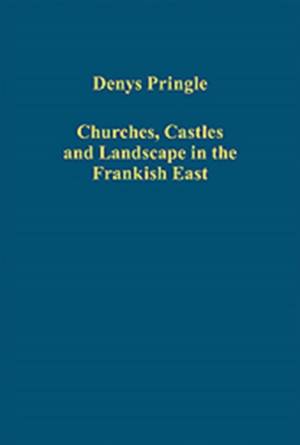
- Afhalen na 1 uur in een winkel met voorraad
- Gratis thuislevering in België vanaf € 30
- Ruim aanbod met 7 miljoen producten
- Afhalen na 1 uur in een winkel met voorraad
- Gratis thuislevering in België vanaf € 30
- Ruim aanbod met 7 miljoen producten
Zoeken
Omschrijving
The sixteen studies brought together in this book (the second collection of Denys Pringle's articles) are the product of the many years that the author has spent investigating the material evidence for Latin settlement in Syria and Palestine in the twelfth and thirteenth centuries. Focusing on the building remains of churches and castles - and their relationship to the landscape - the themes that it explores include: the influence that such factors as existing local architectural traditions and the need to accommodate visiting pilgrims may have had on the design of Latin churches and religious houses; the architecture of the Cistercian houses in the kingdom of Jerusalem; the insights that the geographical distribution of church buildings gives into the extent of Christian settlement in the 12th and 13th centuries; the development and geographical extent of estates and lordships, including the lordship of Mirabel; the functions of castles in peace and war and the perception of their role by contemporaries; the design and purpose of castle chapels and the role of their chaplains; the evidence for Armenian inhabitants in the castle of Sahyun; and the identification of the spring of the Cresson that features in accounts of the military campaigns of 1187.
Specificaties
Betrokkenen
- Auteur(s):
- Uitgeverij:
Inhoud
- Aantal bladzijden:
- 368
- Taal:
- Engels
- Reeks:
Eigenschappen
- Productcode (EAN):
- 9781409454977
- Verschijningsdatum:
- 14/01/2013
- Uitvoering:
- Hardcover
- Formaat:
- Genaaid
- Afmetingen:
- 170 mm x 245 mm
- Gewicht:
- 931 g

Alleen bij Standaard Boekhandel
+ 443 punten op je klantenkaart van Standaard Boekhandel
Beoordelingen
We publiceren alleen reviews die voldoen aan de voorwaarden voor reviews. Bekijk onze voorwaarden voor reviews.











